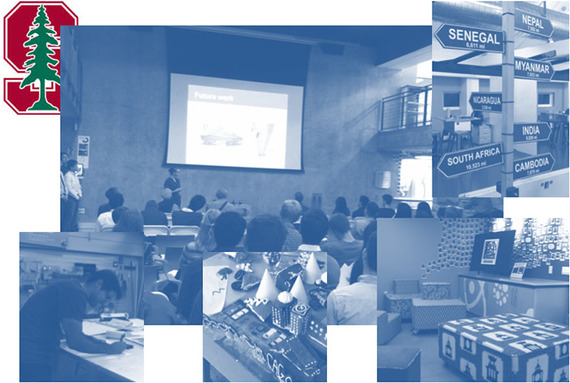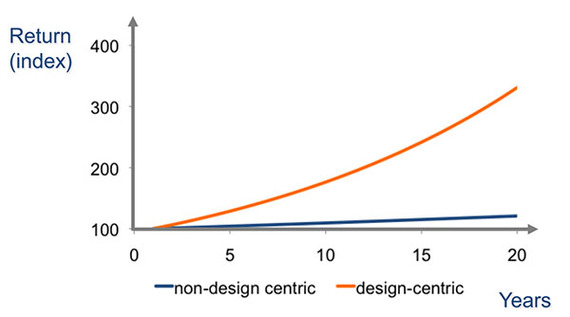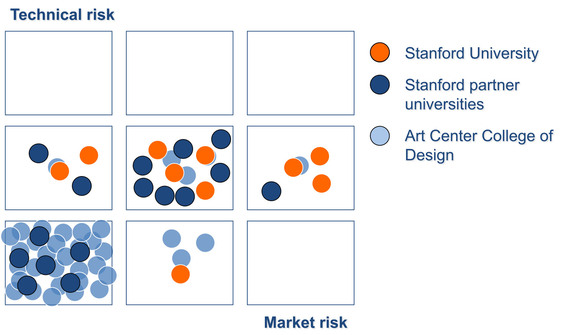With the current wave of design thinking in business, top tier designers are now in short supply. Corporations scout elite universities in their hunt for top performers who possesses the right mix of human skills and social networks. So, how different are the top tier designers from their peers and how big is their actual contribution to performance?
In design, it is well established that the differences in design quality between tier one and tier two design-centric firms result in a difference of six and a half percent annual growth in stock valuation. How much better does a design team need to be to create this additional value?
While studying corporate sponsored projects at Stanford University, Art Center College of Design and other elite educational institutions around the world, we found that Stanford student teams, on average, perform on par with their partner universities along design quality. So hiring a designer from any elite university around the world will ensure a top performer.
However, the best really shine when it comes to risk-taking. Student teams from Stanford University consistently have a risk-attitude that is thirty-three percent higher, which makes them more willing to explore breakthrough concepts than other top-tier students. So, when seeking designers that have great human skills, social capital and cultural risk taking for innovation, where one recruits makes a big difference.
The Stanford risk-attitude may also contribute to the mushrooming of startups in the San Francisco area. For design driven startups to become successful, they have to explore offerings with higher market and technology risk than an incumbent business and these offerings do not yet have a proven market or developed technology. If startups were to compete with established incremental offerings, incumbents would most certainly outcompete them with their experience and size.
So, how does the Stanford student's risk-attitude compare with the risk attitude of startups? Studying twenty-six startups with a booth at the LA Tech Day event showed that Stanford students are more open to risk than their startup peers. Granted, the students have only their grade at stake, while startup founders have their soul, their savings and their professional career invested.
Is the Stanford risk-attitude due to the University's culture? Since many are students arriving from across the world, they may be atypical. The foreign students at Stanford are those who took a chance, left their country and survived long enough to be able to attend the graduate level design courses. Making it to that level required passion, adaptability, risk-attitude and grit. That last factor is a strong predictor of success as well as a key entrepreneurial driver.



